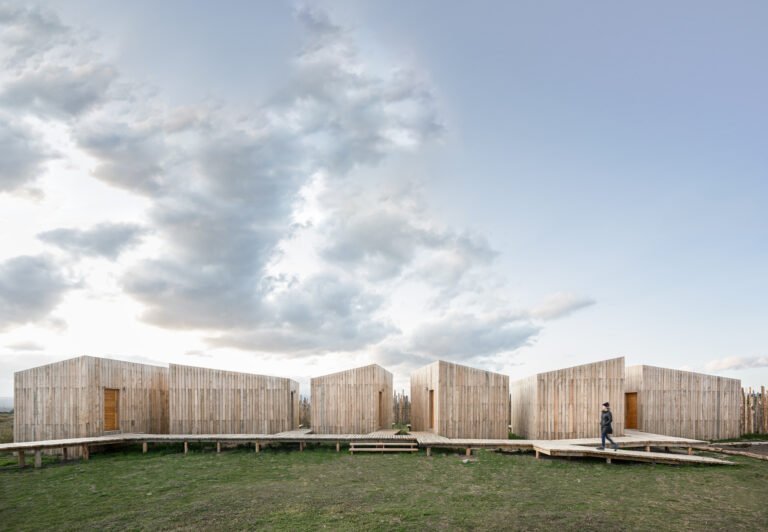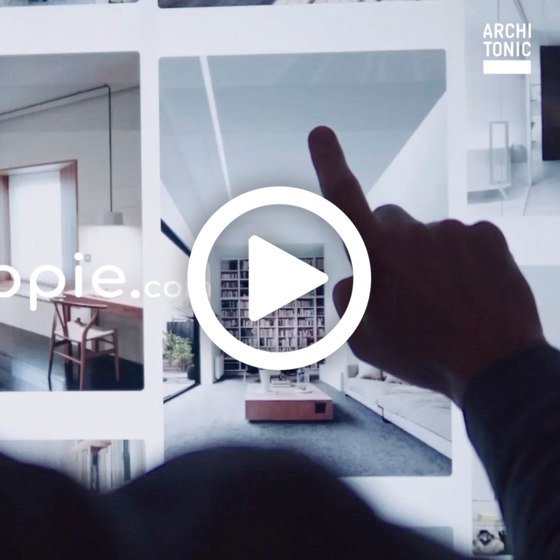Brutalism was the Greatest Architectural Movement in History. Change My Mind.
Browse the Architizer Jobs Board and apply for architecture and design positions at some of the world’s best firms. Click here to sign up for our Jobs Newsletter.
SOCRATES: What do you think he would say if we told him that what he had seen before was silly nonsense, but that now—because he is a bit closer to what is, and is turned toward things that are more—he sees more correctly? And in particular, if we pointed to each of the things passing by and compelled him to answer what each of them is, don’t you think he would be puzzled and believe that the things he saw earlier were more truly real than the ones he was being shown?
– Plato, The Republic, Book VII., Trans. C.D.C. Reeve.
“It is our intention to have the structure exposed entirely, without interior finishes, wherever practicable.”
– Alison Smithson, proposal for a house “for a society that had nothing,” 1953.
The architectural style known as Brutalism — or, in the Smithsons’ original formulation, “The New Brutalism” — has been practically moribund for half a century, but the aesthetic remains a sticking point between architects and the general public. Time and again, a city will move to demolish some drab municipal building or housing block that the public regards as an eyesore, only to be met with a petition and an op-ed proclaiming that the building is a masterpiece that must be preserved.
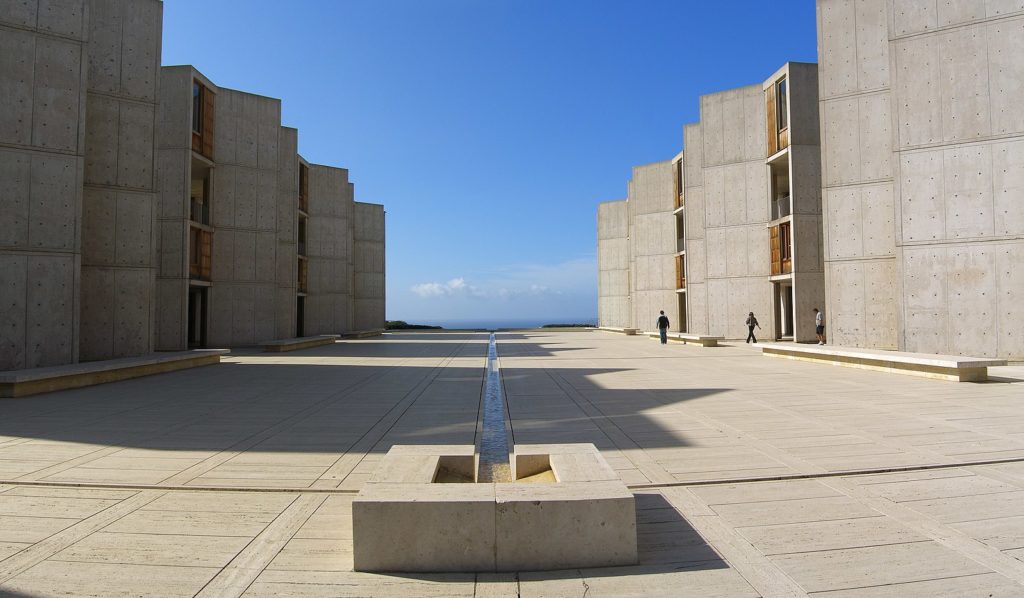
In designing the Salk Institute in La Jolla, California, Louis Kahn drew on Alison and Peter Smithson’s book, Urban Reidentification Grid. Like the Smithsons, Kahn stressed the importance of the interconnectivity of spaces. Photo by Codera23 via Wikimedia Commons.
In the UK, many Brutalist structures are officially listed as protected landmarks, but the movement to protect the “concrete monsters” is global in scope. #SOSBrutalism, an initiative of uncube magazine, the Deutches Arkitecturmuseum, and the Wüstenrot Foundation, maintains a database of Brutalist buildings around the world. It also provides architecture lovers with a convenient hashtag to sound the alarm whenever one of these structures are in danger, a kind of digital bat signal that strikes fear in the hearts of developers.
Brutalism is hated just as fiercely as it is loved. Whenever an embattled Brutalist structure hits the news, someone in the comments section will invariably claim that living near this building has caused them to become depressed. Others, like Prince Charles, make a more general argument, claiming that modern architecture has been a blight on American cities, replacing warm, “human-scale” buildings with structures that are cold, sterile and simply ugly. For these self-described “classicists,” Brutalism is the nadir of a modern movement that was flawed from the start. The time has come, they say, to tear these old ziggurats down and bring back columns, cornices, cupolas, and the rest.
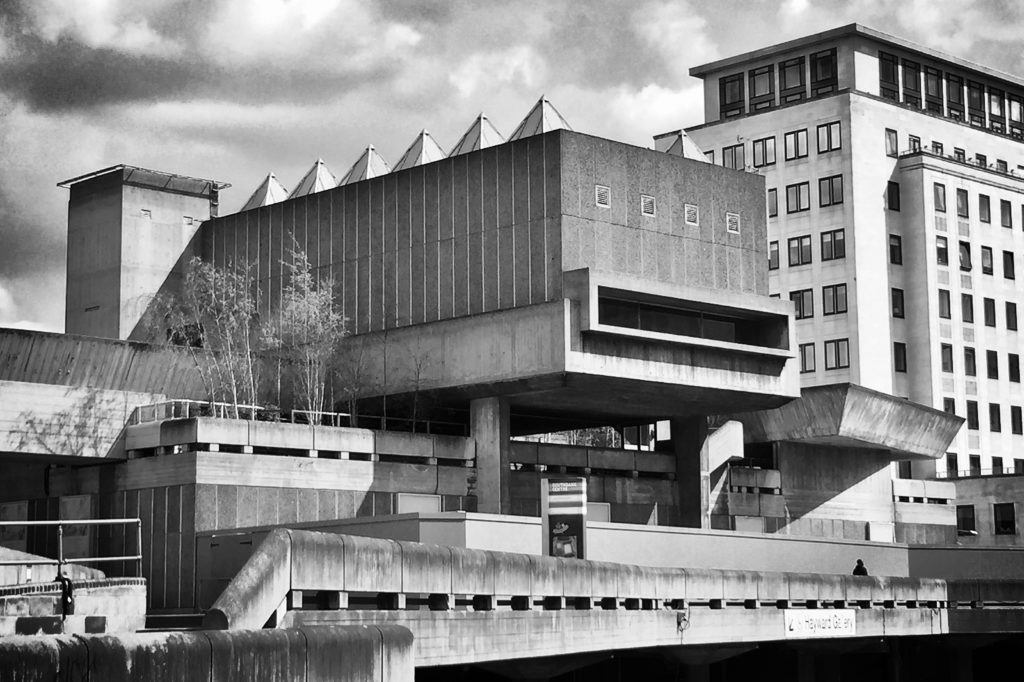
The Hayward Gallery in London’s Southbank Centre is an icon of English Brutalism. Completed in 1968, it was designed by a team including Norman Engleback, Ron Herron, Warren Chalk and John Attenborough. Photo by 35mmMan, via Flickr.
It should not be surprising that Brutalism inspires strong feelings on both sides. The movement was the most uncompromising expression of the modernist impulse to strip away the weight of architectural history and expose architecture for what it truly is: a fundamentally practical art that should serve the needs of ordinary people. While modernist architects varied in their political commitments, the notion of functional architecture always bore a family resemblance to the socialist injunction to restructure society along the principle of “from each according to his ability, to each according to his need.” It is no coincidence that Brutalism’s harshest critics are political conservatives like the aforementioned Prince Charles and the late Sir Roger Scruton. These critics are instinctively hostile to an aesthetic rooted in social utility, especially one that refuses to put a pretty face on cities that remain sites of exploitation and hardship.
Alison and Peter Smithson, the married couple and architecture team who established “The New Brutalism” as both a style and an ethos, understood their work in political terms. Confronting a devastated postwar Britain that required extensive urban redevelopment, the Smithsons understood that traditional architecture would not cut it. Like Le Corbusier before them, they were inspired by reinforced concrete, which allowed architects to design massive structures at a low cost, meaning that the nature of housing, education and other forms of social infrastructure could be radically reimagined along inclusive lines. For the Smithsons, it was not enough to rebuild Britain. The country needed to be transformed.
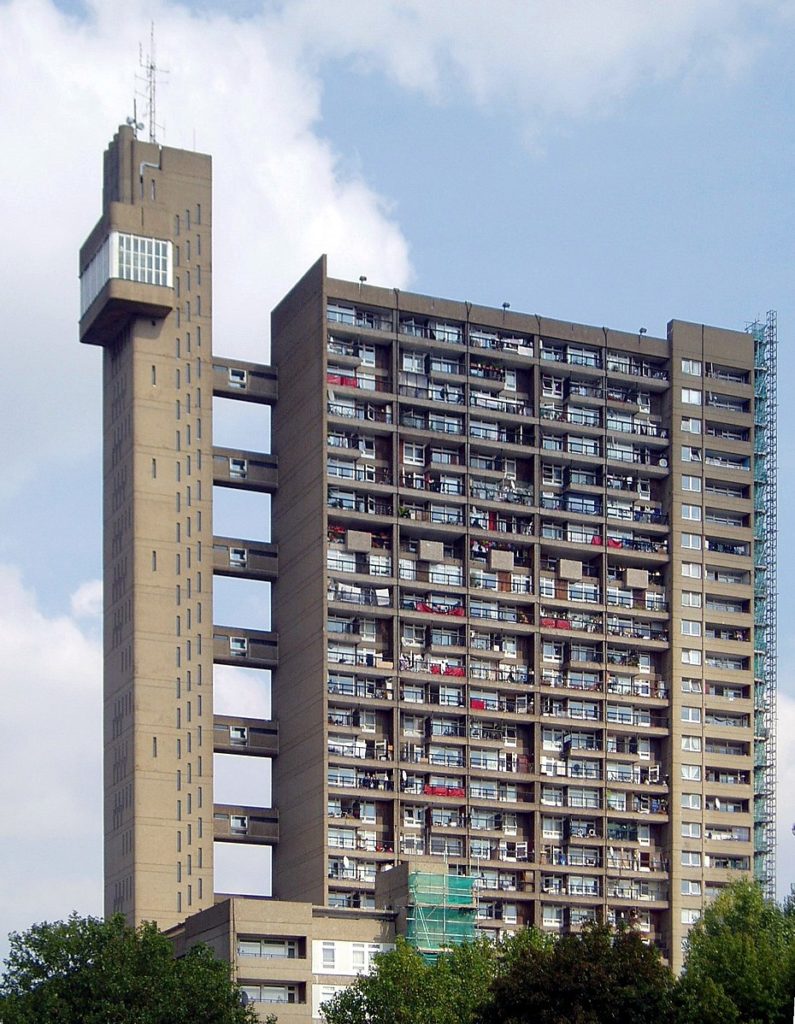
Ernő Goldfinger’s Trellick Tower features a separate access tower. This building, which was conceived as a social housing project, now contains a mix of both social housing and private flats. Photo by Steve Cadman via Wikimedia Commons.
In his 2011 book A Guide to the New Ruins of Great Britain, Owen Hatherley explains that Brutalism was never “a mere aesthetic style.” He explains that it was instead “a political aesthetic, an attitude, a weapon, dedicated to the precept that nothing was too good for ordinary people.” The working class, which had previously been shoved into crowded tenements, could now live in concrete high-rises with commanding views of the city, at a cost that was commensurate with their wages. This was the radical dimension of projects like Ernő Goldfinger’s Trellick Tower — a daringly original building that initially served as a social housing project. For Marxists, the organized industrial proletariat was the vanguard of historical progress; now its members could live in buildings that were at the vanguard of architecture.
Brutalism goes further than previous modernist movements in making structural elements visible. Often, Brutalist buildings leave evidence of the construction process itself on the exterior, including holes and seam lines left over from the setting of liquid concrete. All of this is in the service of transparency, of laying bare what a building is, in its essence. If the buildings aren’t “beautiful” according to traditional standards, what of it? Truth is beautiful. And real beauty, real truth, will only arrive when the mystifications of capitalist ideology are stripped away once and for all, exposing social relations for what they really are and opening up the possibility for their transformation. Anyway, this is what a Marxist might say, and Brutalism is the most frankly socialist of all modern architecture movements. The “ugliness” of Brutalism was really a provocation: a way of retaining the modernist ethos and preventing it from curdling into another readymade style.
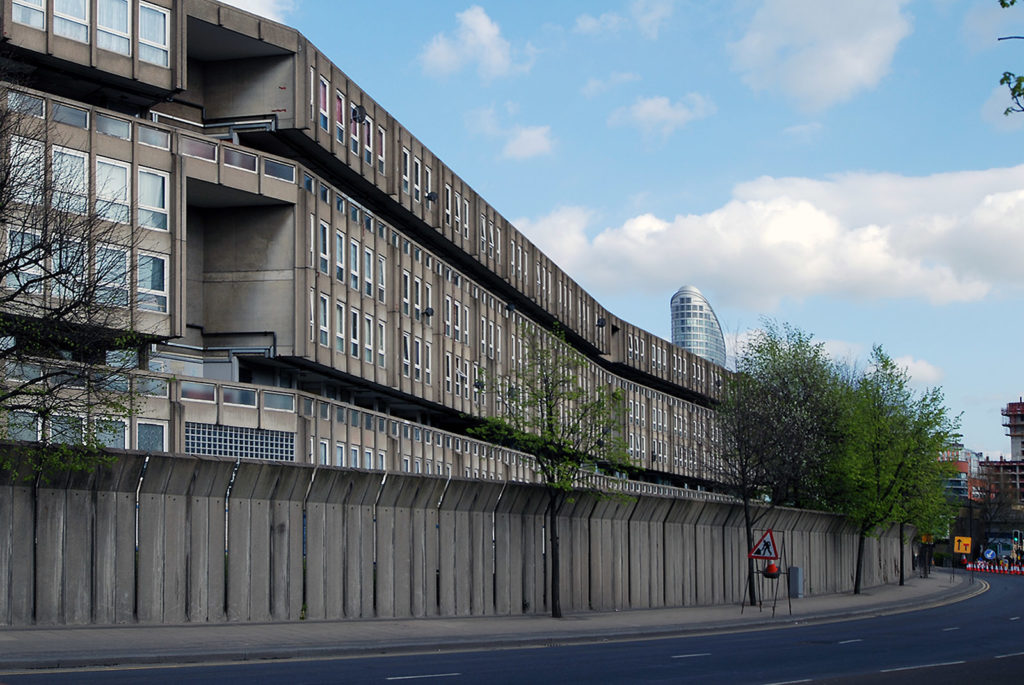
The Smithsons’ Robin Hood Gardens reflected their ideals for community-focused social housing. Unfortunately, the development’s iconic “streets in the sky” communal terraces proved to be unsafe, as muggers would lurk outside tenants’ doorways. This led to a re-evaluation of the Smithsons’ views on urban planning. Photo by IK’s World Trip via Flickr.
Today, the dream of social housing along with the vogue for Brutalist architecture has fallen by the wayside in the US and UK. Brutalism now belongs to history, and maybe socialism does too. But the buildings themselves live on, standing defiantly beside their more polite neighbors and reminding passers-by that architects once dared to imagine a different kind of world. Some Brutalist ideas, like the Smithsons’ notion of “streets in the sky,” which can be seen in their now partly demolished Robin Hood Gardens development, are still worth studying for architects looking for ways to encourage community interaction. (Studied, one should add, for their shortcomings as well as their successes). While rain, rust, and slapdash renovations have done a number on these postwar housing blocks, the democratic optimism that inspired them shines through the murk if you look carefully enough.
In 2022, it doesn’t make sense to build like the Smithsons did. Concrete is not actually a very sustainable building material, and it doesn’t age very well either. In addition, the gesture of laying bare the structural essence of a building has, at this point, been done too often to remain interesting. Stubborn austerity has ceased to be radical. However, the integrity of Brutalism deserves our admiration. It is the greatest architectural movement in history because it is the only one that never compromised.
Browse the Architizer Jobs Board and apply for architecture and design positions at some of the world’s best firms. Click here to sign up for our Jobs Newsletter.
Top image: Robin Hood Gardens, photographed by Neil MacWilliams, via Flickr

